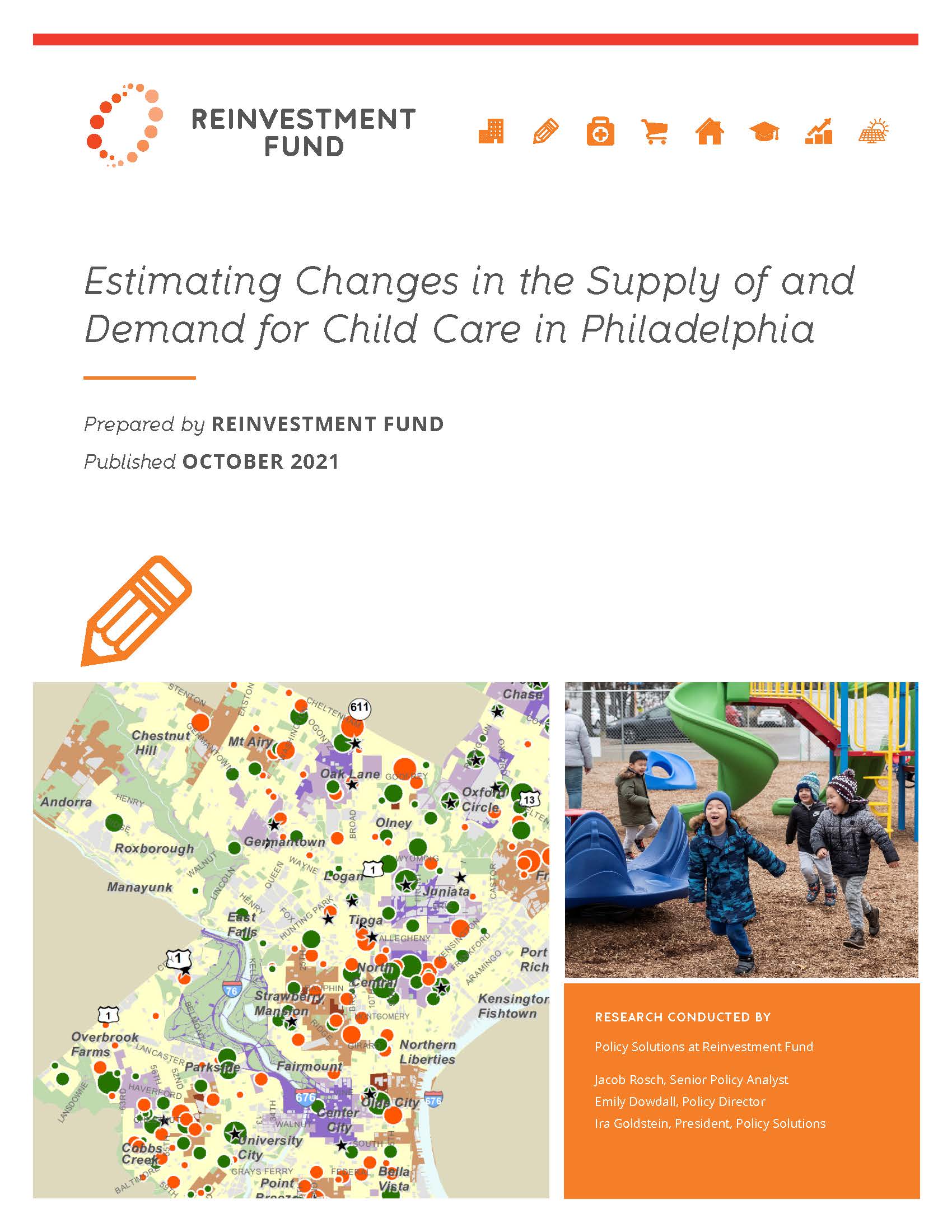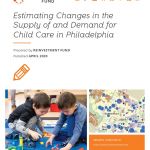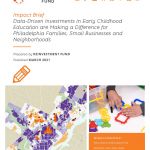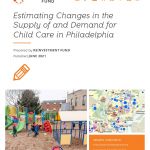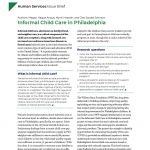Estimating Changes in the Supply of and Demand for Child Care in Philadelphia (2021)
In 2014, with support from The William Penn Foundation, Reinvestment Fund conducted an initial analysis of the supply of and demand for child care in Philadelphia to identify areas of the city where targeted investments could help address shortages of high-quality child care.
Now in its seventh update, Reinvestment Fund’s 2021 childcare analysis provides updated estimates to track the change over time in the supply of, demand for, and shortages in child care. Reinvestment Fund’s Childcare Map is an interactive online tool, www.childcaremap.org, that makes the results of this work accessible to the public at no cost. The tool identifies neighborhoods where high-quality child care is scarce in absolute and relative terms, while also providing actionable information for funders, practitioners, and childcare advocates.
The 2021 report captures the conditions of the city’s childcare market at an unstable point in time. The data presented in this report captures supply and demand for childcare in the first quarter of 2021 as the impacts of the first wave of the COVID-19 pandemic were beginning to wane, reopening was gaining steam, and the impact of the second-waveDelta variant was not yet fully understood.
The report presents the results of descriptive and spatial analyses of the childcare landscape in Philadelphia at the start of 2021. It details both short- and long-term changes in the supply of, demand for, and gaps in care; the year-to-year changes from 2020 to 2021; and shifts following the initial analyses conducted in 2014. It is important to note that various factors could have contributed to the observed changes. For example, demographic shifts and economic changes (e.g., rises in the level of labor force participation) can affect demand, operationalcosts can affect supply, and new policy initiatives and investments can directly impact gaps. To this last point, this analysis also presents the location of strategic investments made in facilities in high-gap areas through the Fund for Quality (FFQ).
Published: October 2021

